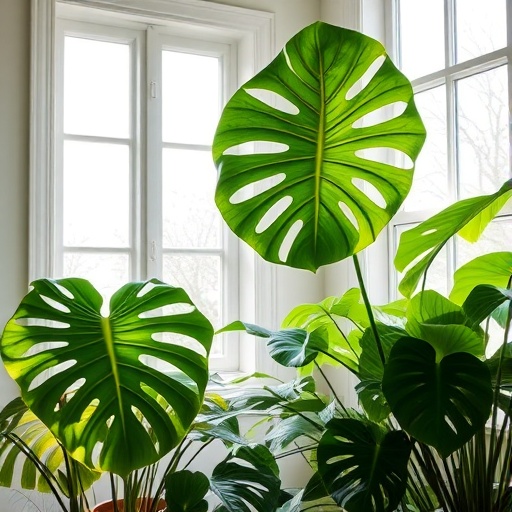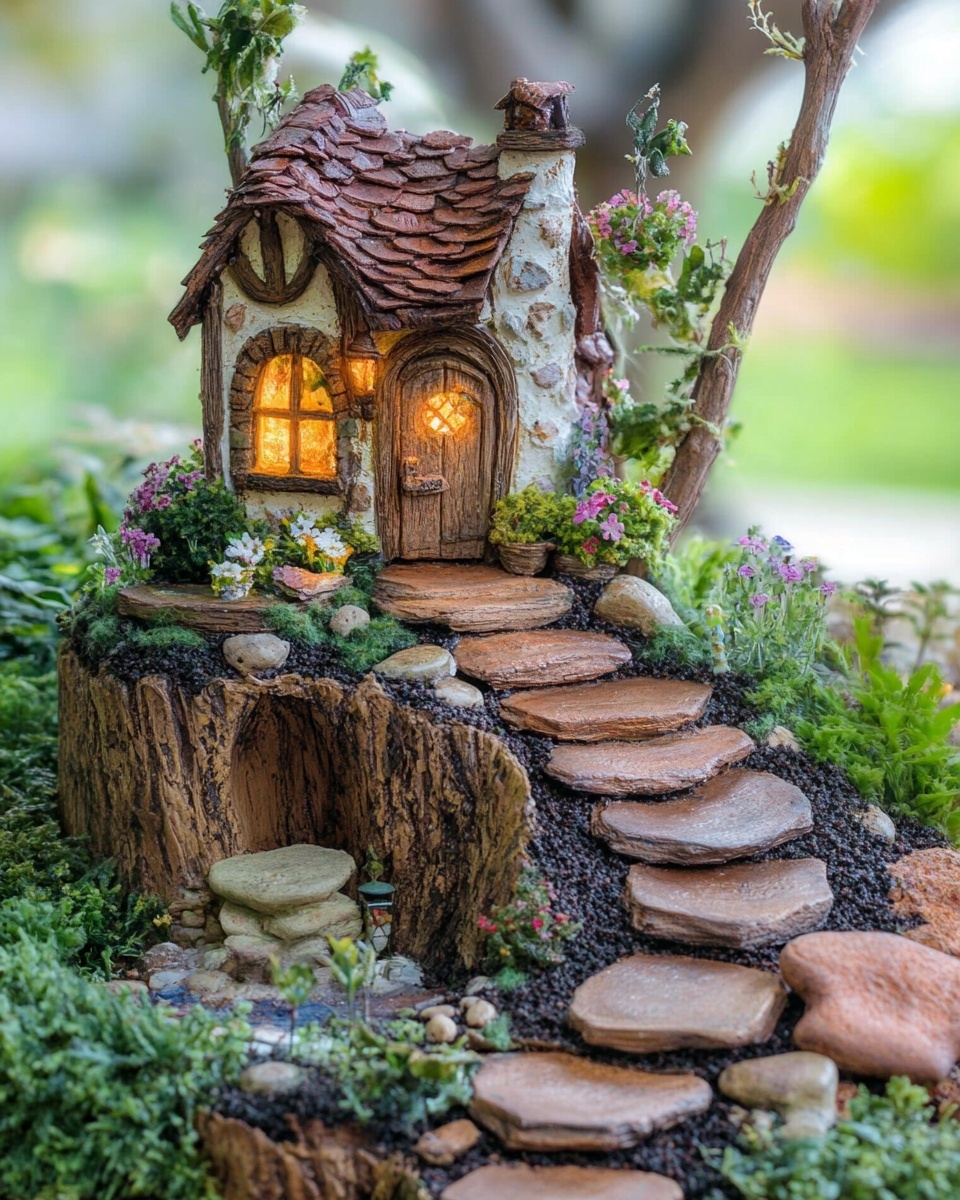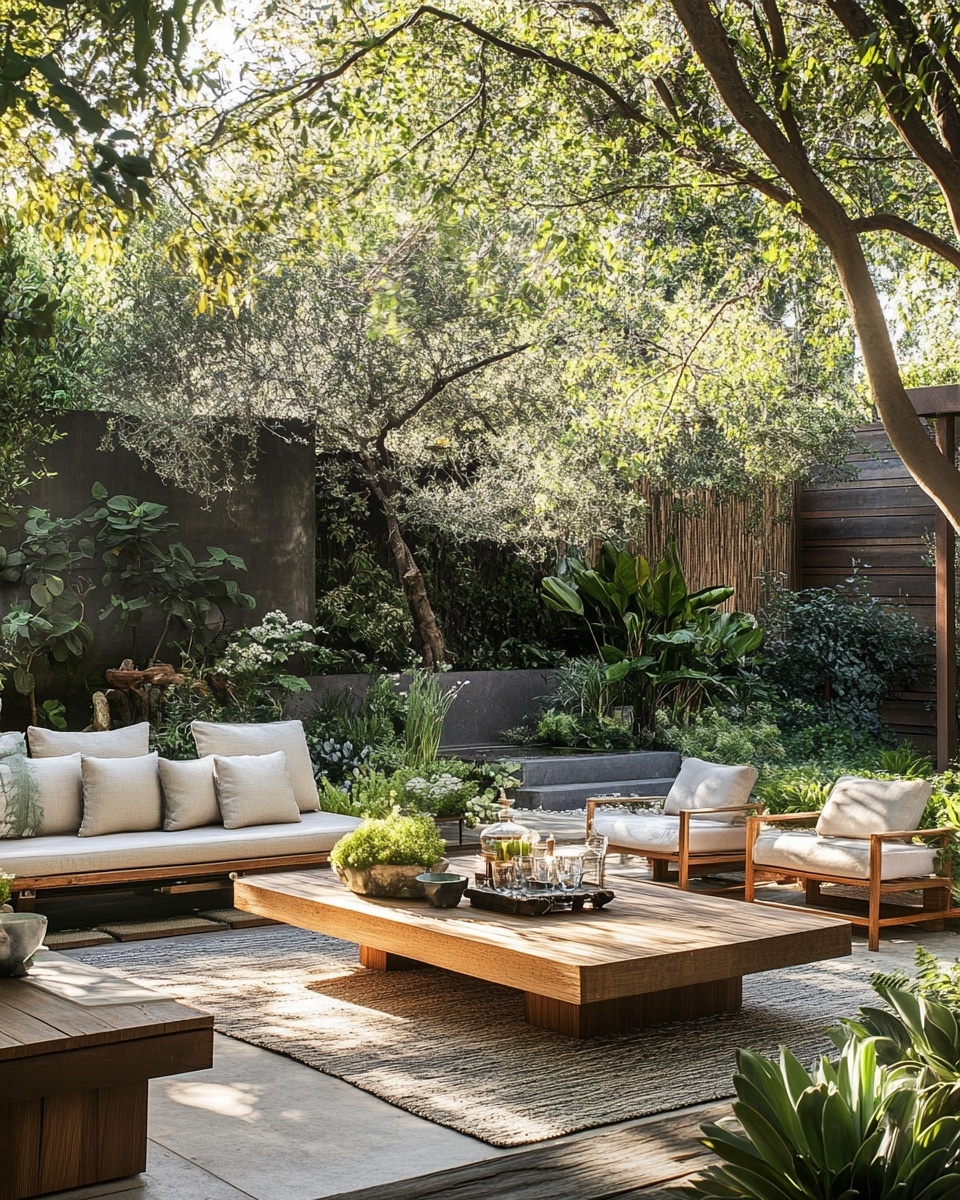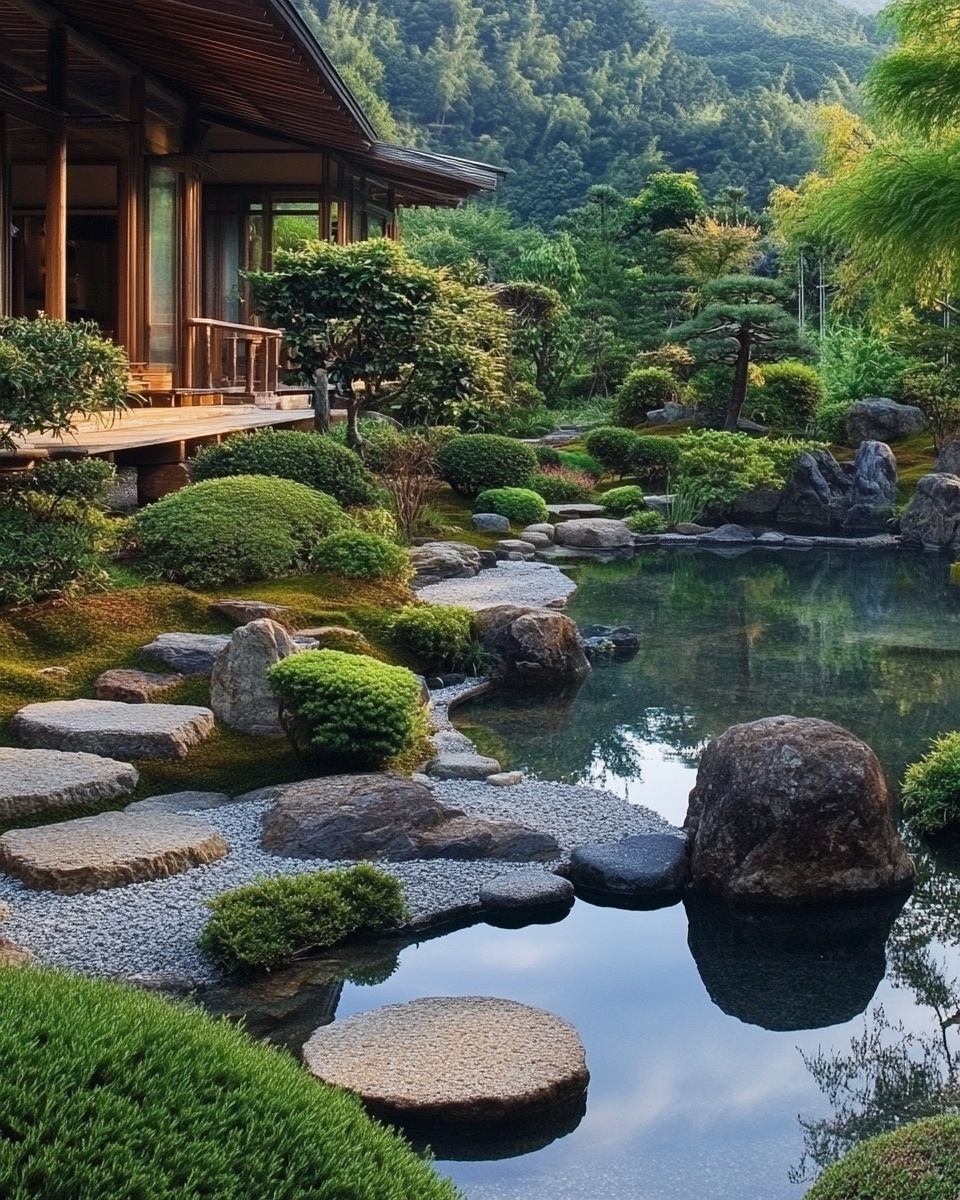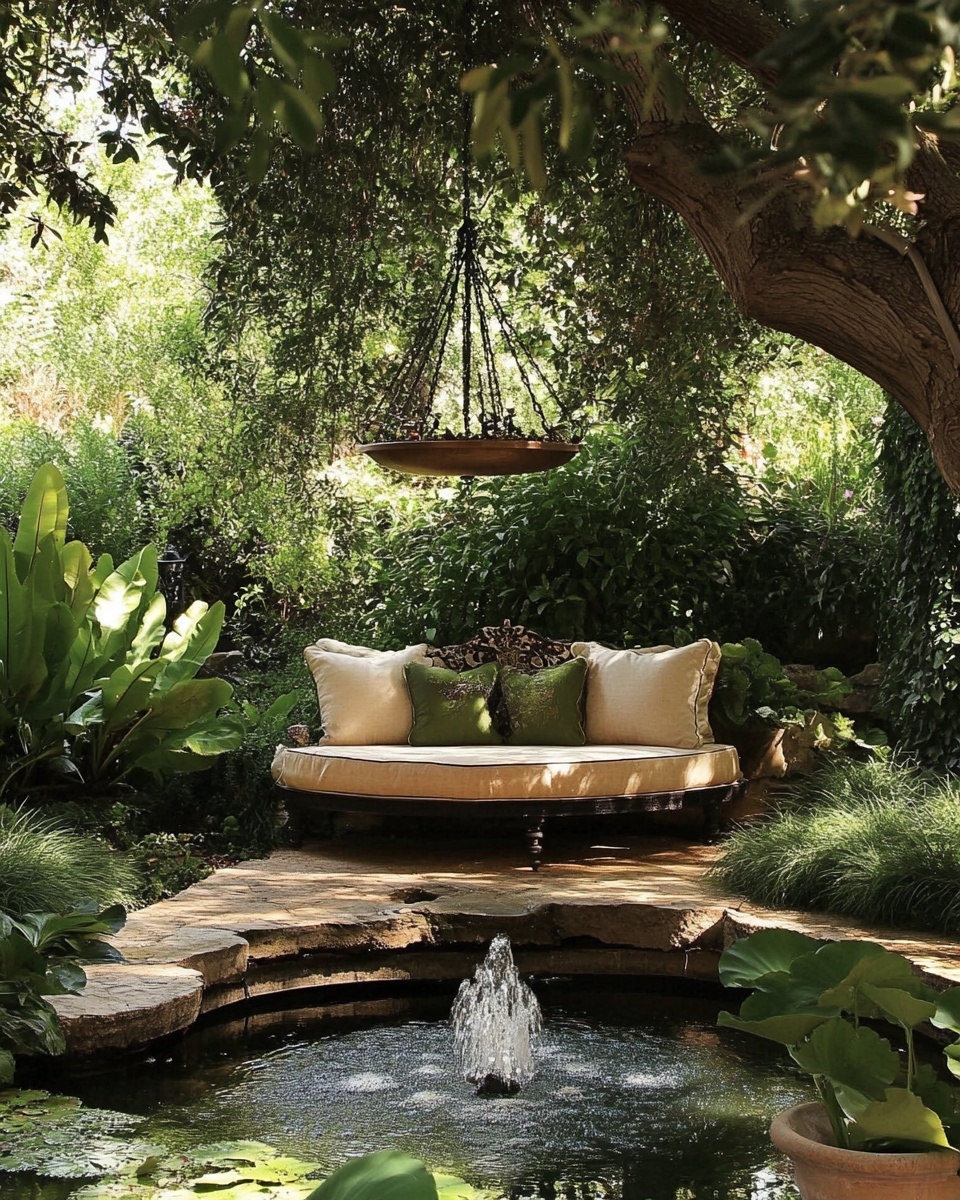Introduction
Did you know that the air inside your home can often be more polluted than the air outside? Studies have shown that indoor air can contain up to five times more pollutants than outdoor air, a startling fact that highlights the importance of improving our internal environments. While air purifiers are a common solution, what if we told you there's a more natural, aesthetically pleasing, and continually working alternative? Enter the world of indoor plants, magnificent natural air purifiers that not only enhance your home's aesthetics but also diligently work to cleanse your air. These incredible indoor plants turn your living space into a refreshing oasis, absorbing toxins like formaldehyde, benzene, and trichloroethylene, and releasing fresh oxygen. Getting started with these green companions is simpler than you might think, making your home healthier and happier, naturally.
Tools & Materials Needed
Embarking on your journey to a cleaner, greener home with indoor plants requires a few essential items. Don't worry, you don't need a professional greenhouse setup; most of these are readily available and often budget-friendly!
- Pots with Drainage Holes: Essential for preventing root rot. Terracotta pots are excellent for beginners as they allow soil to breathe, but plastic or ceramic with drainage work too. For an eco-friendly choice, consider repurposing old food containers (like large yogurt tubs or coffee cans) by drilling holes in the bottom.
- Quality Potting Mix: Not all soil is created equal. Look for a well-draining indoor potting mix that includes perlite or vermiculite. Avoid using garden soil, as it can compact and harbor pests. For a sustainable alternative, try making your own by mixing compost, coco coir, and perlite.
- Watering Can with a Fine Spout: This allows for precise watering, preventing soil displacement and overwatering delicate roots.
- Small Trowel or Hand Shovel: Useful for transplanting and working with soil.
- Pruning Shears or Scissors: For trimming dead leaves or shaping your plants. Clean, sharp blades prevent damage and disease.
- Plant Mister: Many indoor plants appreciate humidity, especially those native to tropical environments. A mister can provide this without overwatering the soil.
- Fertilizer (Optional for starting): A balanced liquid fertilizer can boost growth once your plants have settled in. Look for organic options for an eco-friendly approach.
- Gloves: Protect your hands, especially if you have sensitive skin.
Time & Effort Overview
Bringing air-purifying indoor plants into your home is a rewarding endeavor that demands minimal but consistent effort. Most of these plants are surprisingly resilient and forgiving, making them perfect even for those with a "black thumb."
- Initial Setup: Planting or repotting usually takes about 15-30 minutes per plant. This includes gathering materials, preparing the pot, and placing the plant.
- Weekly Maintenance: Expect to spend around 5-10 minutes per plant per week on average. This includes checking soil moisture, watering, and a quick inspection for pests or yellowing leaves. Some plants might need less frequent watering, reducing this time.
- Monthly/Bi-Monthly Tasks: About 15-30 minutes every 1-2 months per plant for tasks like dusting leaves, rotating pots for even light exposure, and occasional feeding.
- Difficulty Level: Most air-purifying indoor plants fall into the beginner to intermediate category. They are generally more forgiving than, say, orchids or Bonsai trees. Compared to typical herbs that require daily attention, many of these indoor plants are 25-50% less demanding in terms of watering frequency.
Step-by-Step Gardening Process
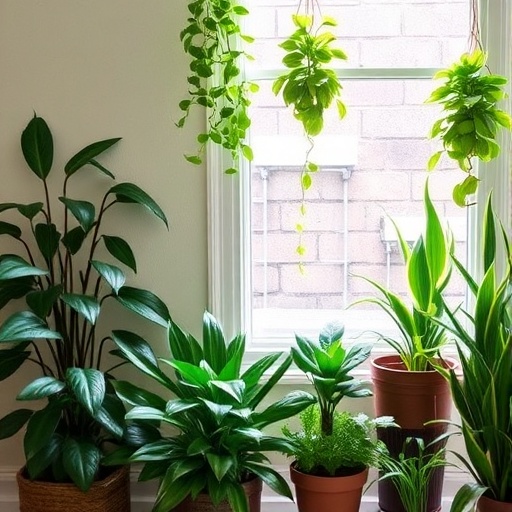
Ready to introduce these amazing air-purifying indoor plants into your home? Let's get them rooted!
Step 1: Choose Your Plants Wisely
Before you even touch soil, select the right indoor plants for your specific environment. Consider factors like light availability in your home, your commitment level, and any pet safety concerns. Some top air-purifying indoor plants include Snake Plant (Sansevieria trifasciata), Spider Plant (Chlorophytum comosum), Pothos (Epipremnum aureum), Peace Lily (Spathiphyllum), and ZZ Plant (Zamioculcas zamiifolia). These are all excellent choices and relatively easy to care for.
Step 2: Prepare Your Pot and Potting Mix
Ensure your chosen pot has drainage holes. Place a small piece of mesh or a coffee filter over the drainage hole to prevent soil from washing out, but still allow water to escape freely. Next, fill the pot about one-third to halfway with your quality indoor potting mix.
Step 3: Transplanting Your Indoor Plants
Gently remove your plant from its nursery pot. You might need to gently squeeze the sides of the pot or even tap the bottom to loosen it. Be careful not to pull the plant by its stem. If the roots are tightly coiled (root-bound), gently loosen them with your fingers. Place the plant in the new pot, ensuring the top of the root ball is about an inch below the rim of the new pot.
Step 4: Fill with Soil and Settle
Carefully fill the rest of the pot with potting mix around the root ball, gently patting it down to remove large air pockets. Avoid compacting the soil too much, as roots need air. Don’t worry if some soil spills; it's part of the process! The goal is to support the plant while providing ample space for roots to grow.
Step 5: Initial Watering
After planting, give your new indoor plant a good, thorough watering. Water until you see excess water draining from the bottom of the pot. This helps settle the soil and provides crucial hydration for the transition. Empty any standing water from the saucer promptly to prevent root rot.
Step 6: Find Its Happy Place
Position your plant in an appropriate spot based on its light requirements. Most air-purifying indoor plants prefer bright, indirect light, but some can tolerate lower light conditions. Avoid direct, harsh sunlight unless the plant is specifically known to thrive in it, as this can scorch leaves. Rotate your plant every few weeks to ensure even growth.
Growth & Care Tips
Consistent care ensures your air-purifying indoor plants thrive and continue to do their vital work.
- Watering Frequency: This is perhaps the most critical aspect. Overwatering is the biggest killer of indoor plants. A good rule of thumb is to check the soil moisture. Stick your finger about 1-2 inches deep into the soil. If it feels dry, it's time to water. If it's still damp, wait! This might mean watering every 7-10 days for some plants, and every 2-3 weeks for others like Snake Plants or ZZ Plants. Data suggests that overwatering contributes to root rot in over 60% of common houseplants.
- Sunlight Exposure: Most indoor plants prefer bright, indirect light. Think of a spot near a window that gets plenty of light but isn't blasted by direct sun for hours. Rotate your plants weekly to ensure all sides get even light exposure, preventing them from leaning towards the light source.
- Pruning: Regularly remove any yellow, brown, or dead leaves. This not only keeps your plants looking tidy but also directs the plant's energy to healthy growth. Use clean, sharp shears to make clean cuts.
- Fertilization: Indoor plants benefit from feeding during their active growing season (spring and summer). Use a balanced liquid fertilizer diluted to half strength every 2-4 weeks. Reduce or stop fertilizing in fall and winter when growth slows.
- Pest Prevention: Inspect your indoor plants regularly for signs of pests like spider mites, mealybugs, or aphids. Early detection is key. A simple solution of neem oil and water can often deterrent or eliminate common pests. Maintaining good humidity and air circulation can also naturally deter many pests.
Eco-Friendly & Sustainable Alternatives
Gardening with indoor plants can be an incredibly sustainable practice. Here are ways to enhance your eco-friendliness:
- Composting: Don't throw away spent coffee grounds, tea leaves, or fruit and vegetable scraps. Start a small indoor compost bin (vermicomposting is great for apartments) to create nutrient-rich soil amendments for your plants.
- Natural Fertilizers: Beyond composting, consider natural fertilizers like diluted fish emulsion or seaweed extract, which provide a gentle nutrient boost without harsh chemicals. Even the water from boiling vegetables can be a great, nutrient-rich liquid fertilizer (once cooled!).
- Water Conservation: Collect rainwater for your plants, or reuse water from cooking pasta or cleaning produce (as long as it doesn't contain soap or harsh chemicals). Consider self-watering planters for consistent moisture without waste.
- Repurposing Containers: As mentioned, old food containers, thrift store finds, or even old boots can be creative and eco-friendly pots. Just ensure good drainage.
- DIY Propagation: Many indoor plants can be propagated from cuttings, meaning you can expand your plant collection without buying new ones or gifting them to friends. This reduces demand for commercially grown plants.
- Small Space Solutions: For those with limited space, consider vertical planters, hanging baskets, or small groupings of plants on shelves. These maximize your green footprint without taking up valuable floor space. For example, a "living wall" can house numerous indoor plants, providing maximum air purification in a minimal footprint.
Creative Ideas & Uses
Indoor plants aren't just air purifiers; they are living decor that can transform your home's ambiance.
- Living Art: Use Pothos or Philodendron in hanging baskets to create beautiful cascades of green, softening harsh lines and adding a touch of jungle luxury. Position a tall Snake Plant in an empty corner to add vertical interest and a modern, sculptural element.
- Terrariums: Create miniature self-sustaining ecosystems with small, humidity-loving plants. These enclosed worlds are both beautiful and a practical way to enjoy specific plant types.
- Groupings and Layers: Combine plants of varying heights, textures, and leaf shapes to create visual interest. For instance, pair a tall Peace Lily with a trailing Ivy and a low-lying Fern. This layering also helps create a microclimate with increased humidity that many indoor plants love.
- Repurpose & Upcycle: Transform old pieces of furniture into unique plant stands or shelves. An old ladder can become a multi-tiered display for your green treasures. A vintage wooden crate can be a rustic holder for a cluster of small indoor plants.
- Bathroom Oasis: Incorporate humidity-loving varieties like Ferns or Orchids into your bathroom. The steam from showers provides a perfect environment, and these plants add a spa-like feel.
- Kitchen Herbs: While not strictly air-purifying, many herbs can thrive indoors. Consider a small window sill garden with basil, mint, and rosemary. For more ideas on maximizing kitchen space, see our guide on DIY Indoor Herb Garden for Small Kitchens.
Common Mistakes to Avoid
Even experienced gardeners make errors, but knowing the pitfalls can help you steer clear.
- Overwatering Syndrome: This is by far the most common mistake. Constantly wet soil suffocates roots, leading to rot and eventually plant death. Remember: it's easier to revive an underwatered plant than an overwatered one.
- Ignoring Drainage: Pots without drainage holes are a recipe for disaster. If your pot doesn't have holes, repot your plant or use it as a cachepot (decorative outer pot) with the plant remaining in a well-draining inner pot.
- Inadequate Light: Placing a plant that needs bright, indirect light in a dimly lit corner will lead to leggy, weak growth and eventual decline. Research your chosen indoor plants' light needs!
- Drastic Environmental Changes: Avoid moving your plants frequently from one extreme condition to another (e.g., from a hot sunny window to a cold, dark room). Plants need time to acclimate.
- Neglecting Pests: A quick weekly check can prevent a small pest problem from becoming an infestation. Treat issues promptly to protect your entire collection of indoor plants.
- Using Garden Soil: Garden soil is too dense for pots and can introduce pests and diseases into your indoor environment. Always use a specialized indoor potting mix.
- Forgetting to Dust Leaves: Dust on leaves can block sunlight absorption, hindering photosynthesis. Gently wipe leaves clean with a damp cloth every few weeks.
Maintenance & Storage Tips
Long-term plant health often comes down to consistent, thoughtful maintenance.
- Seasonal Care: Adjust your watering and fertilizing schedules with the seasons. Most indoor plants require less water and no fertilizer during fall and winter due to slower growth.
- Repotting: As your indoor plants grow, they will eventually outgrow their pots. Signs include roots circling the drainage holes or the plant becoming top-heavy. Repot into a pot that is only 1-2 inches larger in diameter. Generally, repotting is needed every 1-3 years.
- Soil Refresh: Even if not repotting, replace the top inch or two of soil annually with fresh potting mix to replenish nutrients and improve aeration.
- Propagation for Longevity: Many air-purifying indoor plants can be easily propagated. Taking cuttings not only creates new plants but can also rejuvenate an older, leggy plant.
- Solving Common Issues:
- Yellow Leaves: Often a sign of overwatering (if mushy) or underwatering (if crispy). Check soil moisture. It can also indicate lacking nutrients; consider fertilizing.
- Brown Tips: Usually due to low humidity, inconsistent watering, or too much fluoride/chlorine in tap water. Use distilled or filtered water, or mist plants regularly.
- Drooping Leaves: Can indicate severe thirst, but also can be a sign of overwatering if combined with yellowing. Check soil moisture and adjust.
- Poor Soil Drainage: If water sits on top of the soil for too long, the pot likely lacks adequate drainage. Ensure the pot has holes, and consider adding more perlite to your potting mix during repotting.
Conclusion
Embracing air-purifying indoor plants is more than just a trend; it's a commitment to a healthier, more vibrant home. From the diligent Peace Lily to the resilient Snake Plant, these green companions work tirelessly to filter toxins, boost oxygen levels, and infuse your space with natural beauty. By following these straightforward tips, you're not just growing plants; you're cultivating a lifestyle that benefits both you and the environment.
So, what are you waiting for? Take the first step towards a purer home environment today! Share your plant journey with us – we'd love to see photos of your thriving indoor plants! Tag us on your favorite social media platform, or simply leave a comment below. If you're looking for more ways to greenify your space, dive into our other gardening guides now. You might also enjoy exploring https://www.pinterest.com/janatjanay47/ for more gardening inspiration.
FAQ
Q1: What are the best indoor plants for beginners that also purify air?
A: Excellent choices for beginners that are also effective air purifiers include Snake Plants, Spider Plants, Pothos, and ZZ Plants. These indoor plants are robust, forgiving of occasional neglect, and thrive in various light conditions.
Q2: How often should I water my indoor plants?
A: The frequency depends on the plant species, pot size, and environmental conditions. A good general rule for most indoor plants is to water when the top 1-2 inches of soil feel dry to the touch. Always check the soil before watering to avoid overwatering.
Q3: Can indoor plants actually make a significant difference to air quality?
A: While a single plant won't purify an entire room, a collection of indoor plants, especially those known for their air-purifying capabilities, can significantly reduce levels of common indoor air toxins over time, as demonstrated by studies like NASA's Clean Air Study.
Q4: What kind of light do most air-purifying indoor plants need?
A: Most air-purifying indoor plants thrive in bright, indirect light. This means a spot near a window that receives plenty of ambient light but avoids direct, harsh sunbeams, which can scorch leaves.
Q5: My plant's leaves are turning yellow. What's wrong?
A: Yellowing leaves are a common sign of stress. Most often, for indoor plants, this indicates overwatering or underwatering. Check the soil moisture first. It can also signal a nutrient deficiency or natural aging of older leaves.
Q6: Are air-purifying indoor plants safe for pets?
A: Not all are. While many are pet-friendly, some common indoor plants like Peace Lilies and Pothos can be toxic if ingested. Always research the specific plant's toxicity level if you have pets. Consider pet-safe options like Spider Plants, African Violets, or Boston Ferns.
Q7: How do I choose the right pot size for my indoor plants?
A: When repotting, select a pot that is only 1-2 inches larger in diameter than the current pot. A pot that's too large can retain excessive moisture, leading to root rot. Ensure it always has drainage holes for your indoor plants.
Here are some more articles you might find helpful for expanding your gardening prowess and learning about different growing environments:
- For those interested in maintaining optimal growing conditions year-round, check out our guide on Greenhouse Gardening in Winter: How to Keep Plants Warm.
- If you're eager to set up a comprehensive growing space outdoors, our article on How to Design a Productive Greenhouse Layout offers invaluable tips.
- Thinking about optimizing your indoor garden on a different scale? Don't miss our insights on creating an Easy Indoor Gardening Setup for Beginners.
- And if you are looking for other easy to care for plants, check out Best Houseplants for Beginners.
